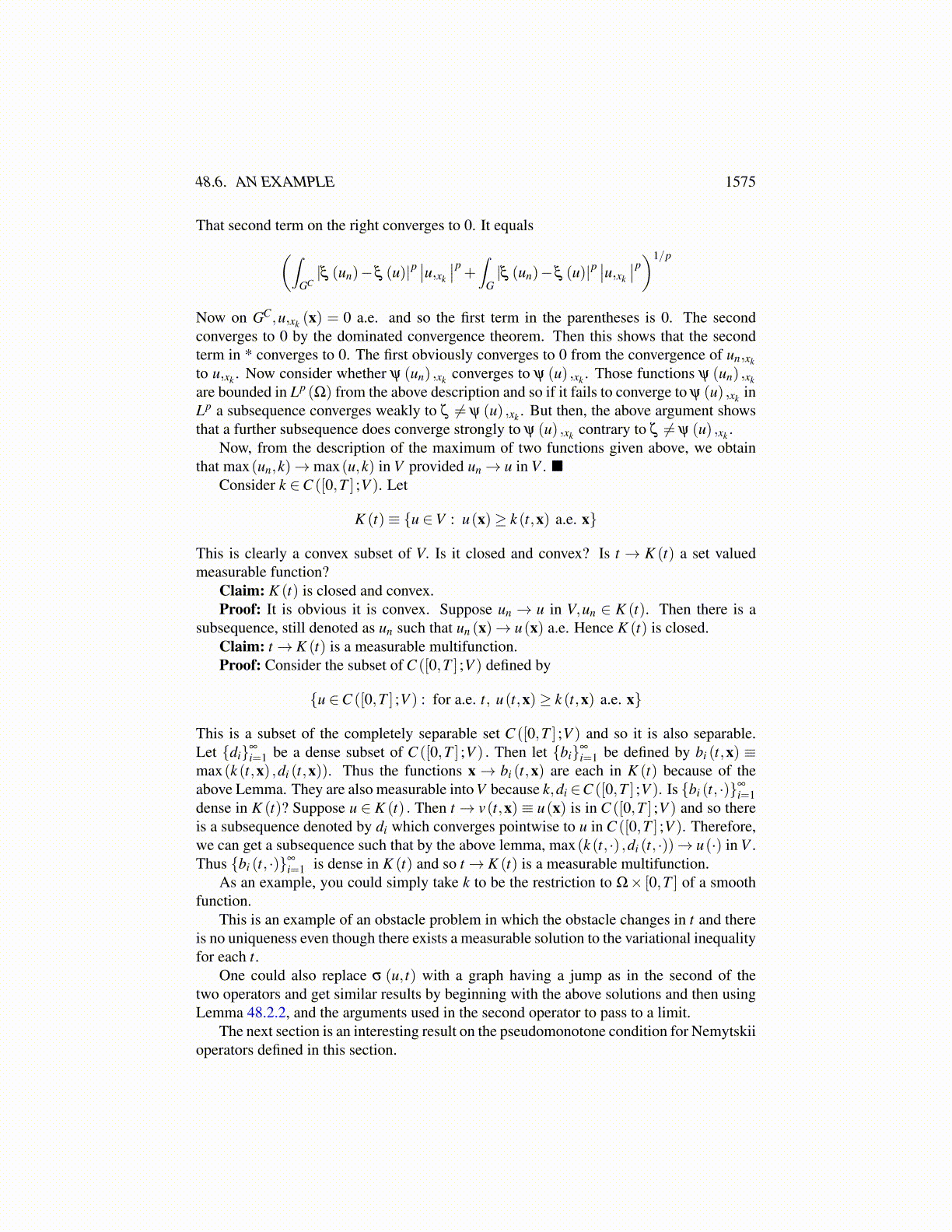
48.6. AN EXAMPLE 1575
and let K (t)⊆V be a closed convex subset of V . There is obviously a coercivity conditionholding for the sum of these two operators A(u, t)+B(u, t) and so there exists u(t) ∈ K (t)such that for all v ∈ K (t)
⟨ f (t)− (A(u(t) , t)+ z(t)) ,v−u(t)⟩ ≤ 0 (*)
where t→ u(t) is measurable into V , t→ z(t) measurable into V ′, t→ A(u(t) , t) measur-able into V ′. Is t→ w(t) measurable where z(t) = γ∗w(t)? Let φ ∈V. Then
⟨z(t) ,φ⟩V ′,V = (w(t) ,γφ)L2(Σ1)
and is given to be a measurable function of t. However, since Σ1 is open, the image ofthe trace is dense in L2 (Σ1) and so by this density and Pettis theorem, t → w(t) must bemeasurable into L2 (Σ1). Thus the variational inequality * is of the form(
(h(t) ,v−u(t))H +(β (t)−w(t) ,γv− γu(t))L2(Σ1)
−(σ (u(t) , t)∇u(t) ,∇v−∇u(t))H3
)≤ 0
for all v ∈ K (t). If the inequality which gives coercivity were eliminated, we would stillhave the above if K (t) were assumed bounded.
What equation is satisfied if K (t) =V ? We would have∫Ω
σ (u(t) , t)∇u(t) ·∇vdx+∫
Σ1
w(t)vdx =∫
Ω
⟨ f (t) ,v⟩dx,
w(t) ∈ [a(γu(t) , t) ,b(γu(t) , t)]
Then proceding formally, we obtain∫Ω
∇ · (σ (u(t) , t)∇u(t)v)dx−∫
Ω
∇ · (σ (u(t) , t)∇u(t))v+∫
Σ1
w(t)vdx
=∫
Ω
h(t)v+∫
Σ1
β (t)v
Then a formal application of the divergence theorem yields the boundary conditions
σ (u(t) , t)∇u(t) ·n +w(t) = β (t) on Σ1
u(t) = 0 on Σ0
where w(t) ∈ [a(γu(t) , t) ,b(γu(t) , t)] along with the partial differential equation
−∇ · (σ (u(t) , t)∇u(t)) = h(t)
Note that if either a(·, t) or b(·, t) were continuous, there would have been no point inconsidering the second operator as a set valued map. One could simply replace the closedinterval [a(r, t) ,b(r, t)] with either a(r, t) or b(r, t) and obtain the desired solutions. Alsonote that nothing is needed about the integrability of either t → h(t) or t → β (t). Thefollowing lemma is convenient in considering the convex sets K (t).